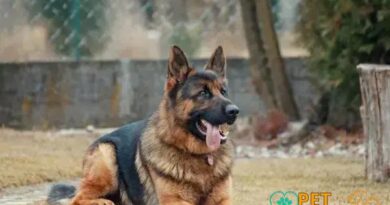What is Observational learning
What is Observational Learning?
Observational learning, also known as social learning or modeling, is a process through which individuals acquire new behaviors by observing others. This concept is particularly significant in the context of animal behavior, including dogs, as it highlights how they learn from their environment and social interactions. By watching other dogs or humans, a dog can learn various skills, from basic commands to complex tricks, simply by observing the actions and outcomes of others.
The Role of Imitation in Observational Learning
Imitation plays a crucial role in observational learning. Dogs are naturally inclined to imitate behaviors they see in others, especially those of their owners or other dogs they trust. For instance, if a dog observes another dog receiving a treat for sitting on command, it may attempt to replicate that behavior in hopes of receiving a similar reward. This imitation process is fundamental to how dogs learn and adapt to their surroundings.
Key Components of Observational Learning
There are several key components that facilitate observational learning in dogs. Attention is the first step; a dog must pay attention to the behavior being modeled. Retention follows, where the dog must remember the observed behavior. Reproduction is the next step, where the dog attempts to replicate the behavior. Finally, motivation plays a role; the dog must have a reason to perform the behavior, often driven by the expectation of a reward.
Examples of Observational Learning in Dogs
One of the most common examples of observational learning in dogs is during training sessions. When a dog sees another dog successfully perform a command, it may be more likely to try the same command itself. This can be particularly effective in group training classes, where multiple dogs are present, and they can learn from each other’s successes and mistakes. Additionally, dogs may learn social behaviors, such as greetings or play styles, by watching their peers.
The Impact of Environment on Observational Learning
The environment plays a significant role in how effectively a dog can engage in observational learning. A positive, stimulating environment with various social interactions enhances a dog’s ability to learn through observation. Conversely, a stressful or chaotic environment may hinder a dog’s capacity to focus and learn from others. Therefore, creating a conducive learning environment is essential for maximizing observational learning opportunities.
Observational Learning and Socialization
Socialization is a critical aspect of a dog’s development, and observational learning is a key mechanism through which social skills are acquired. Puppies, in particular, benefit from observing adult dogs and humans, learning how to interact appropriately. This learning process helps them understand social cues, body language, and acceptable behaviors, which are vital for their overall development and integration into human families.
Limitations of Observational Learning
While observational learning is a powerful tool, it does have limitations. Not all behaviors can be learned through observation alone. Some complex tasks may require direct instruction or hands-on practice. Additionally, the dog’s individual temperament and past experiences can influence its ability to learn through observation. For example, a timid dog may be less likely to engage in observational learning compared to a more confident dog.
Training Techniques Utilizing Observational Learning
Many dog trainers incorporate principles of observational learning into their training techniques. For instance, using a well-trained dog to demonstrate commands can effectively teach other dogs. This method not only engages the observing dog but also reinforces the skills of the demonstrator. Furthermore, trainers often encourage owners to model desired behaviors, as dogs are likely to mimic their human companions.
Conclusion: The Importance of Observational Learning in Dog Training
Understanding observational learning is essential for effective dog training and behavior modification. By recognizing how dogs learn from observing others, trainers and owners can create more effective training strategies that leverage this natural learning process. This approach not only enhances the bond between dogs and their humans but also fosters a more harmonious living environment.


